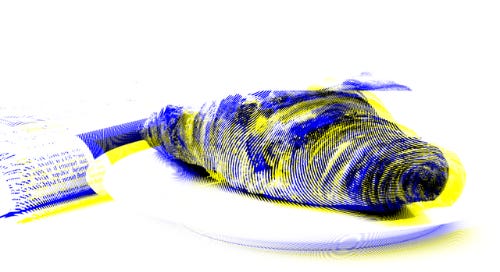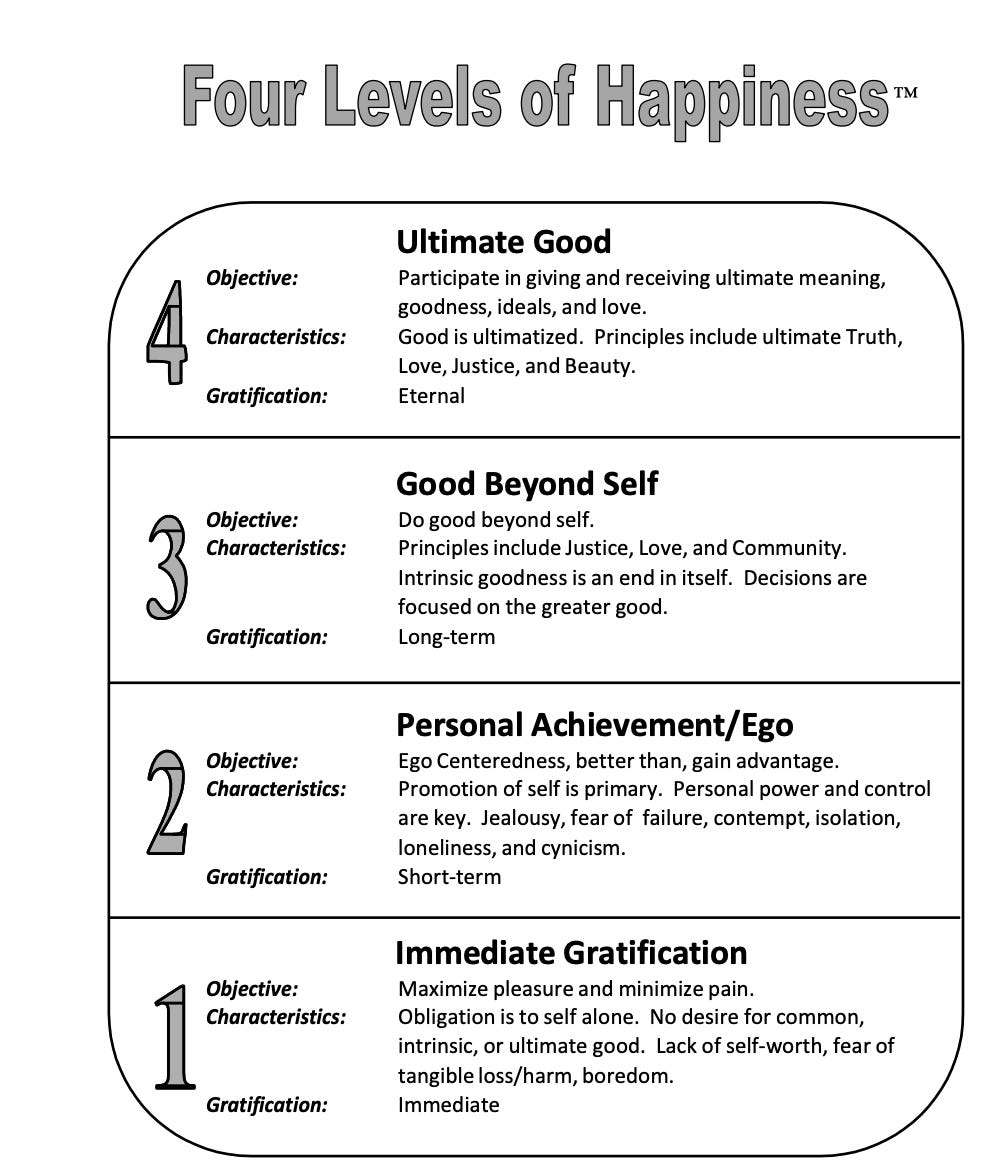The Weekly [REHEATED CROISSANT] : On Mimesis, Thick Desires, and the Four Layers of Happiness by Luke Burgis
An essay that really helped me this week
Author’s Note:
I am on “vacation” this weekend (moving and renovating) so please enjoy this reheated croissant from 2023!
One thing that I love about writing a Substack is that it gets me perusing around the platform reading the excellent work of other writers. One of my goals in starting this newsletter was to do more long-form consumption myself, reading essays and journalistic articles rather than Instagram posts, and little by little that’s been happening. This week I want to share a newsletter I have been loving called
by Luke Burgis.Right now, I am in that special purgatory between the making of a record (which is a pure artistic high) and the planning of the release of a record (which is a pure business hell). This phase always sends me down the darkest mental spirals, because in your mind and your heart you’ve achieved something artistically special, but nobody else has heard it outside of your business team. Without sharing the music with an audience on tour or through recordings (which comes later), the endless meetings about how to best sell the ‘product’ are soul-sucking and terrifying. In these brutal months of an album cycle, I always feel like I’ve lost touch with what I’m actually trying to do.
Luckily, in the midst of one of these mental spirals, I came across an essay called “On Mimesis, Thick Desires, and the Four Layers of Happiness” by Luke Burgis, which hit me exactly in the place I needed.
The essay works from the concept of the four layers of happiness, and is discussed using this graphic by Rev. Robert Spitzer:
In the context of an artistic career, this entire essay was like a breath of fresh air. Burgis discusses the way that both creators and consumers should think in terms of these levels, and how it should inform our actions.
I believe that the creation of art is a thick desire, that it’s aiming for a “good beyond self”. But the selling of art definitely falls into categories 1 and 2. While I’m making an album, all I’m thinking about is how I can do the best thing for the song, and the recording, how I can best let a piece of music fully develop and connect with listeners.
But then, once the album has been mastered and signed off on, I have to spend months planning how to sell the music. This is the height of thin desire. It’s all about short-term satisfaction, ego, self-promotion, and gaining an advantage. As you can see from the above graphic, the emotions that this type of desire produces are jealousy, loneliness, fear of failure, contempt and cynicism among other fun feelings.
Burgis takes this concept further in his discussion of what entrepreneurs should be aiming for when they create.
Level 2 is where consumers and businesses can become trapped in an immanent system of desire, driven by rivalry and insecurity. Mimetic desire, as Girard rightly saw, very often leads to conflict because people get locked into zero-sum battles of desire: a kind of will to power that doesn’t admit of an expansion of desire, nor of new creations and the creation of value, nor of greater goals or deeper levels of meaning and purpose.
Businesses stuck at levels 1 and 2 reveal a specific attitude about the role of the business person, which is extremely common: we are not shapers of desire, but rather satisfiers of desire. Because desire has no telos, or end, in this mindset.
Implied in this view is a very low view of humanity; a kind of acquiescence to a base mode of operating, relatively devoid of magnanimity. The desires served are “thin” desires because they are, in some sense, throw-away desires. When we satisfy one, we’re immediately looking for a new one to satisfy. We need a new model of desire.
People want what they want. Who cares why? Or why should we be concerned about it?
Levels 3 and 4 move more into the realm of what I think of as “thick desires”—desires that have continuity are rooted in something beyond the short-term, rooted in something that can be built upon.
What I took from this, as a musician, is a truth that I’ve always believed but never quite knew how to articulate. If you create music for the sake of selling it, or because you think it will appeal to the level 1 or level 2 desires of your fellow humans, you will become permanently stuck in the cycle of thin desire.
The trick to creating great art is not to make something that people already know and want, that the data points us to, but to create something that people didn’t know they desired, something new that helps us all grow and learn.
“What are these new cathedrals? And who are the entrepreneurs who are going to be building them?” Burgis writes. “They will have to be—must be—people who recognize that they have a role not just in ‘satisfying demand’ but who know they play a role in creating it—and who have the desire to create demand for things that speak to greater depths of the human spirit.”
Every time I read this essay I feel a sense of peace, a lifting of the ugliness of jealousy and competition. A feeling of freedom in the pursuit of creating something meaningful.
I hope you enjoy it too and thank you for your work Luke Burgis!





Rachel
I attended your last Philly show with another jaded entertainment person who like me has heard a million gigs from open mics to working Live Aid. Your performance was and is a breath of fresh air. We will attend whenever you come to town. Buy shirts,download from bandcamp, and a little vinyl just because!!